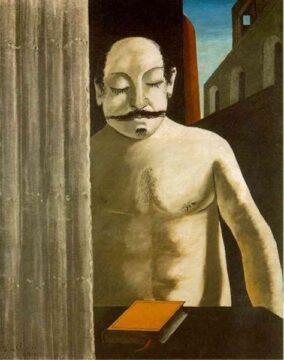Morgan Meis at The Easel:
 “So strong is the belief in life what is most fragile in life–real life, I mean–that in the end this belief is lost.” This is the first sentence of André Breton’s famous, infamous, notorious, and rarely actually read first Surrealist Manifesto. Breton was born in a small town in Normandy, France in 1896. He was thus a very young man at the outbreak of WWI. As for nearly everyone of that generation, the war was a defining and devastating experience. I myself had an obsession with learning about WWI around ten years ago. I remember reading some first-person accounts of soldiers describing the experience of gas attacks in the trenches of the Western Front. I had to put the book down. It was one of the few times in my life that I found myself literally unable to read through my tears.
“So strong is the belief in life what is most fragile in life–real life, I mean–that in the end this belief is lost.” This is the first sentence of André Breton’s famous, infamous, notorious, and rarely actually read first Surrealist Manifesto. Breton was born in a small town in Normandy, France in 1896. He was thus a very young man at the outbreak of WWI. As for nearly everyone of that generation, the war was a defining and devastating experience. I myself had an obsession with learning about WWI around ten years ago. I remember reading some first-person accounts of soldiers describing the experience of gas attacks in the trenches of the Western Front. I had to put the book down. It was one of the few times in my life that I found myself literally unable to read through my tears.
Breton spent much of his wartime years at a neurological ward in the city of Nantes as a stretcher bearer and nurse. After Nantes, Breton was a student at the psychiatric clinic for the Second Army in Saint-Dizier. There he was to come into contact with many soldiers suffering from shell shock. Breton became, understandably, preoccupied with madness, neurological disorders, and then, through a correspondence with Sigmund Freud, the emerging psychoanalytic theories of the unconscious. Madness seemed to Breton to make much more sense of the world, inner and outer, than any other theory, especially theories that stressed the rational nature of human, beast, and cosmos.
More here.
Enjoying the content on 3QD? Help keep us going by donating now.
